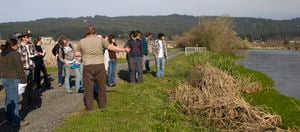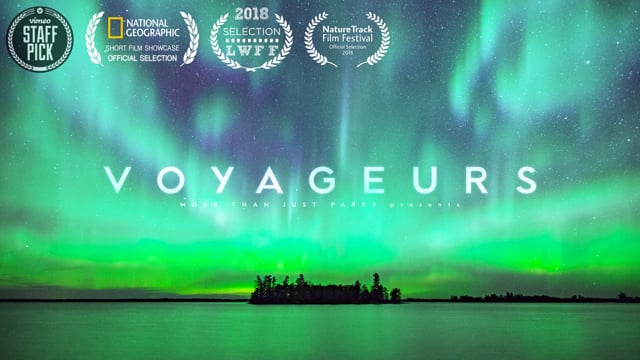This page is the beginnings of a portal for United States community action in response to Ecological emergency. The majority of our information about this is collated via our place pages...Near you.

 Public Lands Rule will help conserve wildlife habitat, restore places impacted by wildfire and drought, expand outdoor recreation, and guide thoughtful development, blm.gov (Apr 18, 2024)
Public Lands Rule will help conserve wildlife habitat, restore places impacted by wildfire and drought, expand outdoor recreation, and guide thoughtful development, blm.gov (Apr 18, 2024)
Yellowstone to Yukon Conservation Initiative[edit | edit source]
Yellowstone to Yukon Conservation Initiative or Y2Y is a transboundary Canada–United States not-for-profit organization that aims to connect and protect the 2,000 miles (3,200 kilometres) Yellowstone-to-Yukon region. Its mission proposes to maintain and restore habitat integrity and connectivity along the spine of North America's Rocky Mountains stretching from the Greater Yellowstone ecosystem to Canada's Yukon Territory. It is the only organization dedicated to securing the long-term ecological health of the region.
Since 1993, more than 450 partner groups have joined forces to support the shared mission and vision. Y2Y's work is a collaborative effort of conservation groups, government agencies, Indigenous governments, landowners, wildlife scientists, planners, businesses, economists, and other individuals and groups interested in protecting native wildlife, ecological processes, and wilderness in the Rocky Mountains of North America. Existing national, state, and provincial parks and wilderness areas anchor the system, while the creation of new protected and special management areas provide the additional cores and corridors needed to complete it. This network is built upon the principles of conservation biology, various focal species assessments, the knowledge of local and traditional residents, and the requirements for sustainable economies.
American Prairie[edit | edit source]
American prairie may refer to either:
- Prairie, an ecosystem spanning a large region of North America
- American Prairie, a particular nature reserve in Central Montana, United States
- American Prairie Foundation, a non-profit for the nature reserve
Dam removal in the Pacific Northwest[edit | edit source]
Dam removal has led to the restoration of many river systems in the Pacific Northwest. This has been done in an effort to restore salmon populations specifically but with other species in mind. "These dam removals provide perhaps the best example of large-scale environmental remediation in the twenty-first century." W
News and comment
2021
How Returning Lands to Native Tribes Is Helping Protect Nature, Jun 3[1]
Biodiversity[edit | edit source]
Citizen science
- AMC's Mountain Watch, Citizen science and phenology monitoring in the Appalachian mountains
- Project Budburst, Citizen Science for Plant Phenology in the USA
- USA National Phenology Network, Citizen science and research network observations on phenology in the USA
Other Initiatives
- Wildlife For All, national campaign to reform wildlife management in the U.S. to be more ecologically-driven, democratic, and compassionate. added 12:57, 18 December 2021 (UTC)
- Butterfly Conservation Initiative
- Center for Biological Diversity
Rewilding[edit | edit source]
- Northeast Wilderness Trust, Video: Northeast Wilderness Trust on youtube.com, added 16:55, 26 March 2024 (UTC)
The Rewilding Institute is an organization concerned with the integration of traditional wildlife and wildlands conservation to advance landscape-scale conservation. It was founded by environmental activist Dave Foreman.
The Rewilding Institute is an organization concerned with the integration of traditional wildlife and wildlands conservation to advance landscape-scale conservation. It was founded by environmental activist Dave Foreman.
About
The Rewilding Institute's mission is to work toward the survival and flourishing of large carnivores in North America by promoting the establishment of suitable habitats in the wilderness, which are permanently interconnected as to allow their natural movement. They believe that humans and large carnivores can and should co-exist in North America. They wish to undo the damage done by over-hunting, over-logging, and exploitation of natural resources. Through continent-scale conservation efforts, they hope to prevent further extinctions of large predators, and to restore them to their function of maintaining the ecological balance of animal life in the wild. They have proposed reestablishing wild populations of wolves in interconnected, protected habitats, so that they can resume their ecological role. As part of their program, they have worked to get wildlife crossings included in interstate highway projects.
See also
- Rewilding Britain
References
External links
- Rewilding website
- Rewilding Earth, home of the Rewilding Institute
Environment quality[edit | edit source]
Open Government Homepage, United States Environmental Protection Agency (government)
Drought National Drought Mitigation Center - U.S. Drought Portal
- Wikipedia:Drought in the United States, 2010–13 Southern United States drought, 2012–14 North American drought
News and comment
2022
 US approves largest dam removal in history to save endangered salmon, The Guardian (Nov 17, 2022) — Four dams on California-Oregon border to be decommissioned on Klamath River, which fish use to reach spawning grounds
US approves largest dam removal in history to save endangered salmon, The Guardian (Nov 17, 2022) — Four dams on California-Oregon border to be decommissioned on Klamath River, which fish use to reach spawning grounds
2017
Seattle Stopped Sucking—So Can You, Oct 26[2]
Study: Pollution Kills More People Than War, Smoking, Hunger, and Other Causes of Death, Oct 20[3]
Open spaces[edit | edit source]
Great Old Broads for Wilderness - Land Trust Alliance - ParkGrades.com, find a great park near you
Community Greens
- Communities nationwide are taking down their backyard fences; backyard commons already exist in numerous cities including Boston, Sacramento, Baltimore, New York, and San Francisco.
- Community Greens are multi-functional spaces for gardening, recreation, and leisure which provide social, economic, and environmental benefits to urban residents. Communities that create backyard commons have increased interaction with neighbors throughout the planning and implementation process, which results in a stronger overall sense of community. Other social benefits include decreased crime from having more eyes on the street and having safe places for children to play and adults to relax. Community Greens, like other types of urban green spaces, significantly improve the ecological functioning of urban habitats. Vegetation and permeable pavement slows stormwater runoff and allows for groundwater recharge. This in turn reduces pollutant loads being carried to nearby waterbodies during storm events. Urban environments are often significantly warmer than outlying suburbs, mostly due to the prevalence of low-albedo concrete surfaces. City trees mitigate this heat island effect and cool the urban microclimate through shading and evapotranspiration. When neighbors take down their fences, backyards are transformed from fragmented habitats to connected corridors for urban wildlife. City dwellers recognize value in green space, often simply from an aesthetic standpoint, and this is reflected through increased property values. W
Trees, woodland and forest[edit | edit source]
ACTrees, Alliance for community trees - Tree City USA
Wikipedia:
- List of U.S. National Forests: The United States has 155 protected areas known as National Forests covering 188,293,938 acres (762,000 km2/294,208 sq. mi). The National Forests are managed by the U.S. Forest Service, an agency of the U.S. Department of Agriculture.
- Tree City USA is a tree planting and tree care program sponsored by the Arbor Day Foundation for cities and towns in the United States. List of Tree Cities USA
Coastal community activism[edit | edit source]
Blue Frontier Campaign[edit | edit source]
The Blue Frontier Campaign is a United States marine conservation activist organization founded by David Helvarg in 2003.
The Campaign has established a nationwide network of grassroots (the marine conservation community or Blue Movement calls this 'seaweed') lobbyists. It is campaigning for an American Oceans Act to protect what the members call "our public seas" and is working to improve ocean policies in the 23 coastal states of the United States. Blue Frontier supports maritime community activists by distributing model policies and practices. Its other objectives include the creation of books, a TV documentary series, and other educational materials on ocean exploration and stewardship. The first such creation was the 2005 - 2006 Ocean and Coastal Conservation Guide. The Blue Vision Conference in Washington DC in July 2004 and Blue Vision Mid-Atlantic Conference at the National Aquarium in Baltimore in April 2005 were the start of a series of seminars to introduce seaweed activists to oceanographers, port officials, and other marine stakeholders. Annual awards called "The Breakers" are presented in ten categories: Art & Entertainment, Conservation Science, Marine Education, Best Business Practices, and Hero of the Seas.
Future plans for the Campaign include endowing a fellowship for investigative reporting on waste, fraud and abuse on America's Seas, working to include marine education in middle school and high school curricula, and developing a media campaign that highlights lessons from the past American frontier, and "applies these to our new blue one".
The directors of the Campaign represent other activist organizations including Clean Ocean Action, The Democracy Collaborative, EarthEcho International, Khaled Bin Sultan Living Oceans Foundation, National Alliance for Hispanic Health, Reef Relief, and Save Our Shores. It also has a panel of over twenty advisors.
- Blue Frontier Campaign, link checked 16:08, 17 January 2022 (UTC)
Seaweed Rebellion[edit | edit source]
The Seaweed Rebellion is an informal marine environmentalist activist movement in the United States. Deriving its name from an analogy with grassroots democracy, the movement comprises disparate organizations with the common aim of protecting the oceans, seas and coasts of the United States.
The Blue Frontier Campaign is an umbrella organization aiming to coordinate these groups into a common voice to achieve effective lobbying of federal and state policy makers.
The name was first applied to a 1947 court case between the United States and California over who owned the sea bed, and the associated oil deposits, off the state coast but is now heard rarely in that context.
Other initiatives[edit | edit source]
- Healthy Gulf, "focuses on a just transition that moves us away from extractive systems of energy production, consumption, and political oppression, and towards resilient, regenerative and equitable economies." added 16:00, 17 January 2022 (UTC)
- Clean Beaches Coalition
See also[edit | edit source]
- Topic overview: Ecological restoration, Community action on biodiversity, Rewilding, Environment quality activism, Open spaces activism, Trees, woodland and forest, Coastal community activism
- UN Decade on Ecosystem Restoration
External links
- Cascadia (bioregion) W
References




